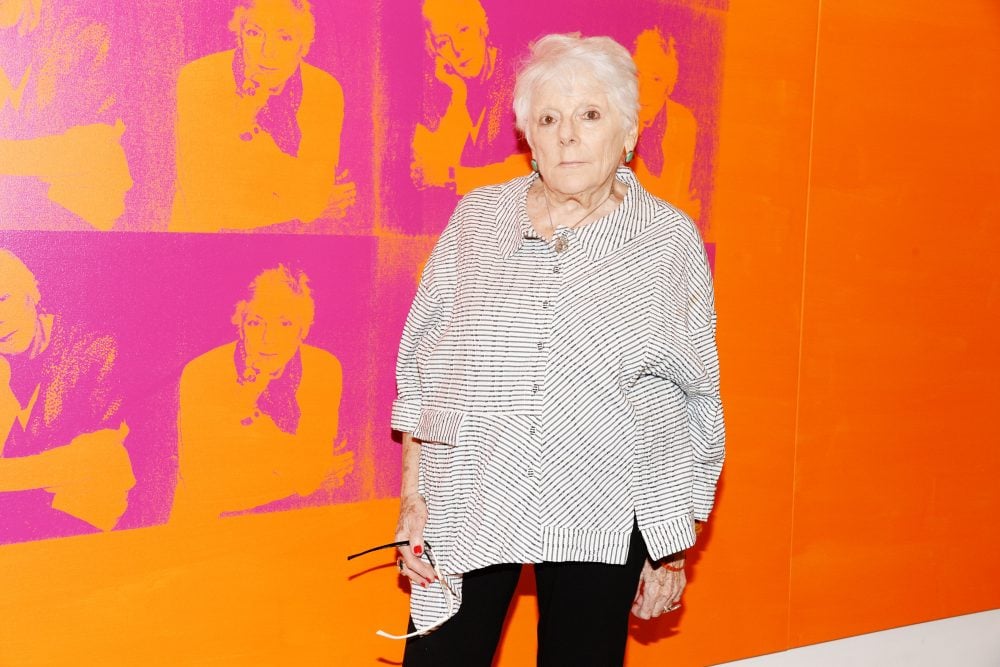
Groundbreaking art historian Linda Nochlin died on Sunday at the age of 86. The author of the landmark 1971 essay “Why Have There Been No Great Women Artists?” Nochlin redefined the field with a feminist perspective that confronted notions of male creative genius and pointed out societal obstacles that precluded women from pursuing their own artistic ambitions.
“Her role in introducing feminist analysis into the field is well known,” wrote the College Art Association when the organization honored Nochlin with its Distinguished Lifetime Achievement Award for Writing on Art in 2006, adding, “What art historian today does not know her essay ‘Why Have There Been No Great Women Artists?” as the founding moment of this methodological shift?”
Born in Brooklyn on January 30, 1931, Nochlin, née Weinberg, majored in philosophy with minors in Greek and art history at Vassar College in Poughkeepsie, New York. A master’s degree in English at New York’s Columbia University followed, and then a Ph.D. in art history at New York University’s renowned Institute of Fine Arts.
ARTnews, which published her most famous essay, broke the news of her passing, which was confirmed by friends of Nochlin’s family. Nochlin was inspired to write the essay by a 1970 encounter with gallerist Richard Feigen, who told her he was having trouble finding women artists to represent and then asked her the now-famous question.
Earlier this year, speaking with the College Art Association, Nochlin recalled her entrée into the women’s movement. “Do you know about feminism?” a friend asked her, bearing reading materials. “I said, ‘No.’ She said, ‘Read this.’ She left me [feminist newspaper] Off Our Backs and… the somewhat crude broadsheets of the early feminist movement. I stayed up all night reading and I was a feminist the next day.”
After her conversation with Feigen, “the article almost wrote itself,” she recalled. “It seemed all so hitched together, so logical.”
Linda Nochlin in front of Philip Pearlstein’s Portrait of Linda Nochlin and Richard Pommer from 1968. © Matthew Begun.
“The arts,” she wrote, “as in a hundred other areas, are stultifying, oppressive, and discouraging to all those, women among them, who did not have the good fortune to be born white, preferably middle class and, above all, male.”
Nochlin flipped the narrative, which had long implied that lack of female achievement in the arts was due to an inherent inferiority. “The miracle is, in fact, that given the overwhelming odds against women,” she argued, “that so many… have managed to achieve so much sheer excellence, in those bailiwicks of white masculine prerogative like science, politics, or the arts.”
Throughout her career, Nochlin published extensively, specializing in 19th- and 20th-century painting and sculpture, contemporary art and theory, and women and art. She wrote her dissertation on Gustave Courbet and co-organized the 1988 Brooklyn Museum exhibition of his work, “Courbet Reconsidered,” which included the first public display of his controversial canvas The Origin of the World (1866).
Among Nochlin’s other curatorial work are the exhibitions “Realism Now” at the Vassar College Art Gallery (1968), “Women Artists: 1550–1950” (1976) at the Los Angeles County Museum of Art, and “Global Feminisms: New Directions in Contemporary Art” (2007), the inaugural show at the Brooklyn Museum’s Elizabeth A. Sackler Center for Feminist Art.
Nochlin taught at Vassar College, Yale University, and, in New York, Hunter College and the City University’s Graduate Center. Her major writings include Realism and Tradition in Art, 1848–1900 (1966), Women, Art, and Power and Other Essays (1988), and The Politics of Vision: Essays on Nineteenth-Century Art and Society (1989).
Her forthcoming book, Misère, focuses on how art responded to the changing social conditions of the Industrial Revolution and what she dubbed the “phenomenon of misery.” It will be published by Thames & Hudson in March.
Nochlin’s first husband, Philip H. Nochlin, died in 1960. The couple had a daughter, Jessica. In 1968, Nochlin married art historian Richard Pommer (1930–1992), with whom she had a second daughter, Daisy. Alice Neel painted mother and daughter in 1973.